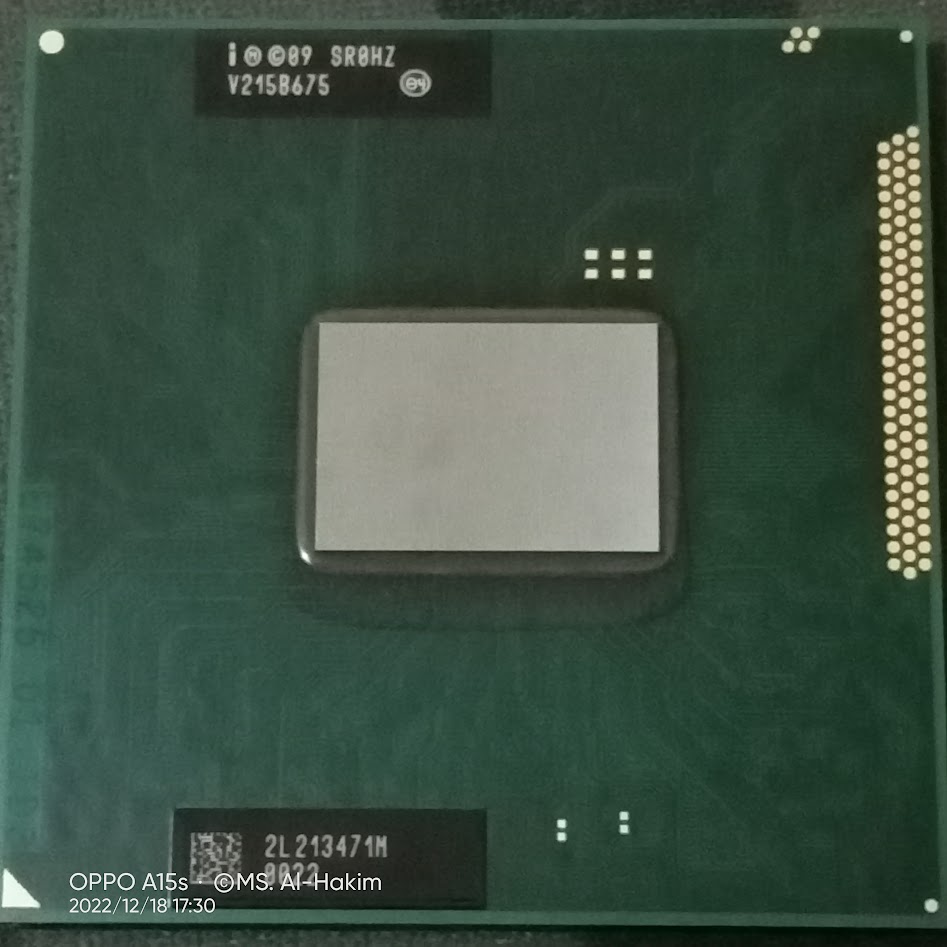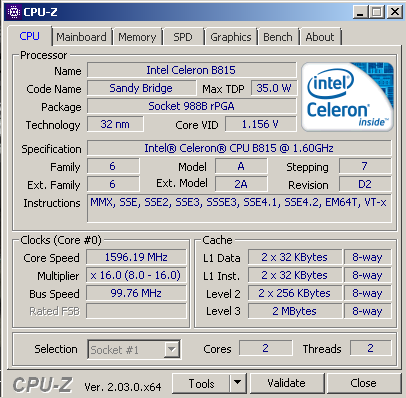Comparing: Intel Core i7 7700K vs Intel Celeron B815
In this comparison, we analyze two Processors: Intel Core i7 7700K and Intel Celeron B815, using synthetic benchmark tests to evaluate their overall performance. This side-by-side comparison helps users understand which hardware delivers better value, speed, and efficiency based on standardized testing. Whether you're building a new system or upgrading an existing one, this benchmark-driven evaluation offers valuable insights to guide your decision.
Specification Comparison Table
This specification comparison presents technical details of several devices or components to help you understand the key differences between each option. Use this table as a reference to determine which device best suits your needs.
| Specification | Intel Core i7 7700K | Intel Celeron B815 |
|---|---|---|
| Architecture | x86 | x86 |
| Technology | 14 nm | 32 nm |
| Clock | 4.2 GHz - 4.5 GHz | 1.6 GHz - - |
| Core/Thread | 4 / 8 | 2 / 2 |
| Segmen | Desktop | Mobile |
Submission Comparison Table
This submission comparison table displays the number and details of benchmark data submissions from various devices or components. This information helps you understand the performance based on the benchmarks that have been tested, as well as providing an overview of the consistency and popularity of the available benchmark results.
| No. | Benchmark Software | Intel Core i7 7700K | Intel Celeron B815 |
|---|---|---|---|
| 1 | Cinebench - R15 |
867 cb |
104 cb |
| 2 | Cinebench - R20 |
2222 pts |
207 pts |
| 3 | PiFast |
14sec, 730ms |
47sec, 490ms |
| 4 | SuperPi - 1M |
30sec, 414ms |
24sec, 976ms |
Submission Comparison Chart
This chart visualizes the benchmark scores comparison between two hardware devices based on submitted data.
Media Gallery
A collection of photos of tested hardware. These images can help you identify the physical form, model, and variant of the hardware in question. These photos are from our own documentation, and if they are not available we may not be able to document them.
About Hardware Intel Core i7 7700K
The Intel Core i7-7700K, launched in early 2017, is a high-performance desktop processor from the 7th generation Kaby Lake family. Built on the 14nm process, the i7-7700K features 4 physical cores and 8 threads, thanks to Hyper-Threading Technology, and is targeted at enthusiasts, gamers, and power users. It operates at a base frequency of 4.2 GHz and can boost up to 4.5 GHz via Intel Turbo Boost, delivering excellent single-threaded performance one of the highest at the time of its release.
As part of Intel’s “K” series, the Core i7-7700K has an unlocked multiplier, making it ideal for overclocking on compatible Z-series motherboards. However, with a TDP of 91W, the processor demands an effective cooling solution, especially when overclocked beyond its stock speeds. Users typically pair this CPU with aftermarket air or liquid coolers to ensure thermal stability under heavy workloads or gaming sessions.
The processor includes Intel HD Graphics 630, which supports 4K output at 60Hz and is sufficient for basic tasks like web browsing, video playback, and office work. However, for serious gaming or GPU-accelerated workloads, a discrete graphics card is still necessary, especially when paired with a high-refresh-rate monitor or demanding software.
In terms of real-world performance, the i7-7700K remains capable even today for 1080p and 1440p gaming, general productivity, and creative tasks. It delivers solid frame rates in many modern titles when used with a modern GPU, and it handles applications like Adobe Photoshop, Premiere Pro, and coding environments reasonably well. However, due to its limited core count by today’s standards and lack of PCIe 4.0 support, it has started to show its age in multi-threaded and next-gen workloads.
Despite being surpassed by newer Intel and AMD CPUs with more cores and better efficiency, the i7-7700K still holds value in many mid-range desktop setups, especially for users who already own an LGA 1151 system and want to maximize performance without a full platform upgrade.
Thursday, 23 June 2022 07:42:37 | Update: 1 month ago
About Hardware Intel Celeron B815
The Intel Celeron B815, released in 2012, is an entry-level mobile processor based on the Sandy Bridge architecture. Designed for budget laptops, it features 2 cores and 2 threads with a fixed clock speed of 1.6 GHz. The processor does not support Turbo Boost or Hyper-Threading, limiting its multitasking capabilities.
Manufactured using 32nm process technology, the Celeron B815 has a TDP of 35W, which is relatively high for a low-end mobile CPU. This higher thermal output typically results in shorter battery life and more heat generation compared to modern low-power processors.
For graphics, the processor is equipped with Intel HD Graphics 2000, which runs at a base frequency of 650 MHz and can boost up to 1.0 GHz. While not suitable for gaming, this integrated GPU handles basic visual tasks like 720p video playback, simple animations, and light graphical workloads adequately.
In everyday usage, the Celeron B815 performs best with lightweight applications such as web browsing, word processing, and playing standard-definition videos. However, it struggles with modern operating systems, multitasking, and heavier workloads due to its limited core/thread count and lack of advanced CPU features.
Hardware Detail:
Device: SAMSUNG 300E4Z
RAM: 4GB DDR3 Dual Channel
OS: Windows 7
Sunday, 27 November 2022 02:25:40 | Update: 1 month ago




